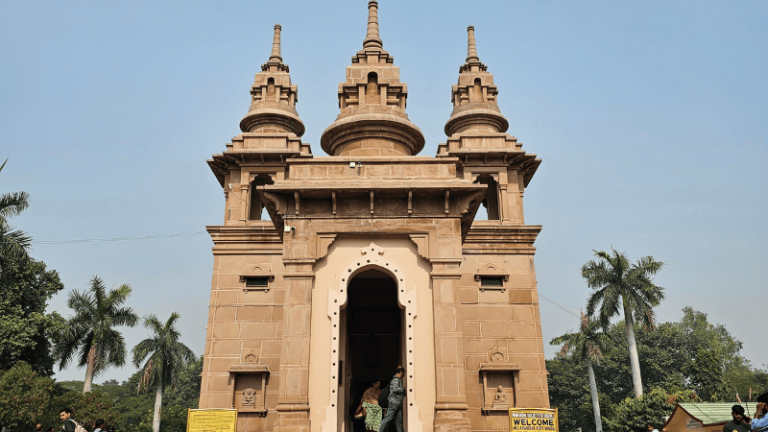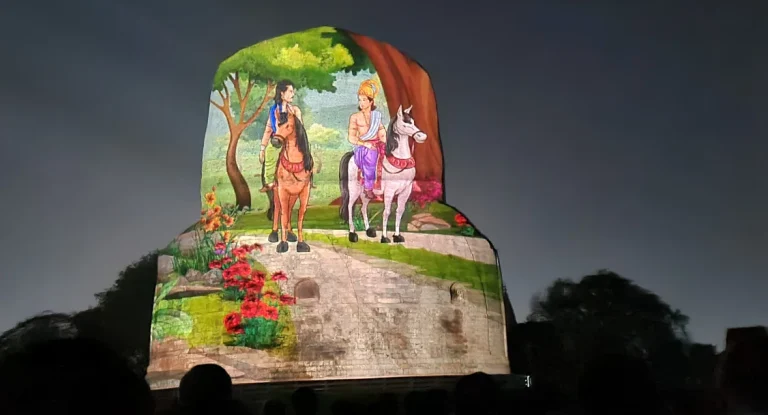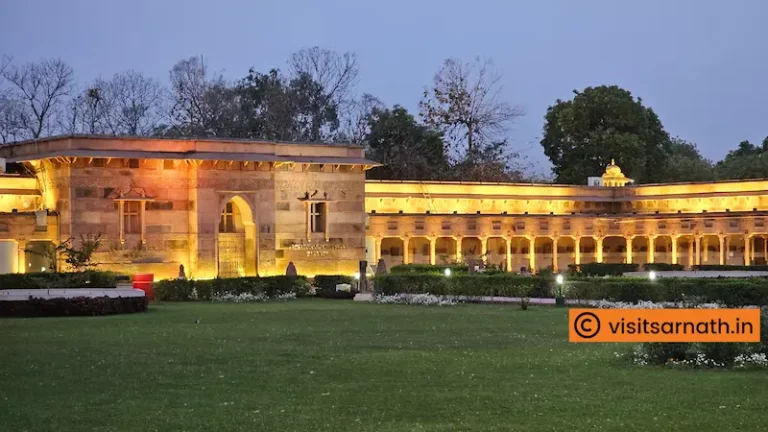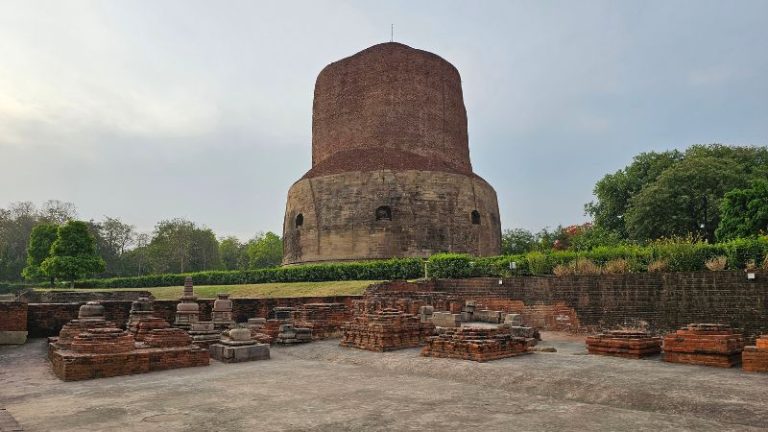The original Sarnath Pillar, also known as the Lion Capital of Ashoka, is a prominent symbol of India’s rich cultural heritage and ancient art.
Erected by Emperor Ashoka around 250 BCE, this monument commemorates his conversion to Buddhism and marks the sacred location where Lord Buddha delivered his first sermon in Sarnath, near Varanasi, India.
The pillar’s exquisite craftsmanship and symbolic significance serve as a testimony to the expertise and vision of the Mauryan era.
Material and Craftsmanship

The original Sarnath Pillar was made of highly polished sandstone, showcasing the remarkable craftsmanship of the Mauryan artisans.
Standing between 15 to 20 meters tall, the pillar has a cylindrical shaft with a beautifully smooth and lustrous surface, reflecting the exceptional quality of stone carving and finishing techniques used during that period.
The pillar shaft remains at the archaeological site in Sarnath, while the Lion Capital is preserved in the Sarnath Museum.

The Lion Capital
The most notable feature of the original Sarnath Pillar is its iconic Lion Capital, which is crowned by four majestic lions seated back-to-back.

These four male Asiatic lions symbolize strength, courage, and pride, representing the spread of Buddhism in all four cardinal directions. Each lion is intricately carved, with delicate details visible in their manes and expressions, highlighting the skill of the artisans.
The lions stand atop an inverted bell-shaped lotus, which serves as the base of the capital.
Symbolism of the Capital
Below the lions, the capital is adorned with a circular abacus featuring bas-reliefs of four animals: a lion, an elephant, a horse, and a bull, each separated by wheels (chakras).
These four animals are believed to symbolize different phases of the Buddha’s life and reflect different aspects of existence.
The chakra motif, also known as the Wheel of Dharma, symbolizes the eternal cycle of life and the path of righteousness.
The four noble truths of Buddhism are also often associated with these symbols, reinforcing the spiritual significance of the monument.
A Legacy in Modern India
The Lion Capital of Ashoka from the original Sarnath Pillar holds a special place in modern India. It was adopted as the national emblem of India, symbolizing the values of power, vigilance, courage, and confidence.

The wheel, or Ashoka Chakra, appears at the center of the Indian national flag, emphasizing the importance of justice and truth. The lion capital stands as a representation of India’s historical and cultural identity.

Today, the pillar shaft remains at the archaeological site in Sarnath, while the Lion Capital itself is preserved in the Sarnath Museum. Visitors can admire it as a timeless masterpiece that embodies India’s spiritual and cultural heritage.
Conclusion

The original Sarnath Pillar is more than just an architectural achievement; it is a symbol of India’s enduring cultural legacy.
From its polished sandstone craftsmanship to the symbolic four lions and chakras, it continues to inspire generations, embodying values of strength, peace, and Dharma.
For anyone exploring the ancient history of India, the Sarnath Pillar stands as a significant monument worth understanding and appreciating.
FAQs
Where is the original Sarnath pillar?
The original Sarnath pillar is located at the archaeological site in Sarnath, near Varanasi, India. The pillar shaft remains at the site, while the Lion Capital is preserved in the Sarnath Museum.
What are the 4 animals on the Ashoka pillar?
The four animals on the Ashoka pillar are a lion, an elephant, a horse, and a bull. These animals are depicted on the circular abacus below the four lions and symbolize different phases of the Buddha’s life and various aspects of existence.
What is the replica of the capital of Sarnath?
The replica of the capital of Sarnath refers to various reproductions of the Lion Capital of Ashoka, which is widely used as a symbol of India’s national identity. The original Lion Capital is housed in the Sarnath Museum, and replicas can be found in different parts of India, often used in governmental and cultural contexts.





